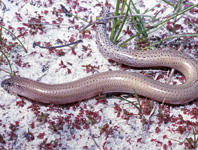Abstract
Responding to purported taxonomic anarchy, in an article published in the widely read journal Nature, Garnett & Christidis (2017) [hereafter GC] opined on the need for “standardized global species lists”, at the behest of conservationists, and proposed the construction of a judicial committee to “restrict … freedom of taxonomic action” and promote taxonomic stability. Here we reflect on this perspective and contest that the view of GC conflicts with some basic and indisputable principles underpinning the philosophy of science, most notably: it must be free. They appear to believe that taxonomic revisions should be based on political, economic and conservation concerns, and they treat species as fixed real entities, instead of refutable scientific hypotheses. In addition to such theoretical misconceptions, GC did not consider important practical aspects of what they term taxonomic anarchy, most significantly the participation of conservationists as authors of taxonomic works, and the importance of alternative management units, a well-established discussion in conservation biology.
References
Anonymous [International Commission on Zoological Nomenclature] (1999) International code of zoological nomenclature. 4th Edition. International Trust for Zoological Nomenclature, London, xxix + 306 pp.
Avise, J.C. (1989) A role for molecular genetics in the recognition and conservation of endangered species. Trends in Ecology & Evolution, 4, 279–281.
https://doi.org/10.1016/0169-5347(89)90203-6Bremer, K., Bremer, B., Karis, P. & Källersjö, M. (1990) Time for change in taxonomy. Nature, 343, 202.
https://doi.org/10.1038/343202a0Carvalho, M.R. de, Bockmann, F.A., Amorim, D.S., Brandão, C.R.F., Vivo, M. de, Figueiredo, J.L. de, Britski H.A., de Pinna, M.C.C., Menezes, N.A., Marques, F.P.L., Papavero, N., Cancello, E.M. & Crisci, J.V. (2007) Taxonomic impediment or impediment to taxonomy? A commentary on systematics and the cybertaxonomic-automation paradigm. Evolutionary Biology, 34, 140–143.
https://doi.org/10.1007/s11692-007-9011-6Crisp, D.J. & Fogg, G.E. (1988) Taxonomic instability continues to irritate. Nature, 335, 120–121.
https://doi.org/10.1038/335120b0Daugherty, C.H., Cree, A., Hay, J.M. & Thompson, M.B. (1990) Neglected taxonomy and continuing extinctions of tuatara Sphenodon. Nature, 347, 177–179.
https://doi.org/10.1038/347177a0del Hoyo, J. & Collar, N. (2014) HBW and Birdlife International Illustrated Checklist of the Birds of the World. Vol. 1. Non-passerines. Lynx Edicions, Barcelona, 904 pp.
del Hoyo, J. & Collar, N. (2016) HBW and Birdlife International Illustrated Checklist of the Birds of the World. Vol. 2. Passerines. Lynx Edicions, Barcelona, 1013 pp.
Dickinson, E.C. & Christidis, L. (Eds.) (2014) The Howard and Moore Complete Checklist of the Birds of the World. Vol. 2. Passerines. 4th Edition. Aves Press, Eastbourne, 752 pp.
Dickinson, E.C. & Remsen Jr., J.V. (Eds.) (2013) The Howard and Moore Complete Checklist of the Birds of the World. Vol. 1. Non-Passerines. 4th Edition. Aves Press, Eastbourne, 461 pp.
Dominguez, E. & Wheeler, Q.D. (1997) Taxonomic stability is ignorance. Cladistics, 13, 367–372.
https://doi.org/10.1111/j.1096-0031.1997.tb00325.xDubois, A. (1998) Lists of European species of amphibians and reptiles: will we soon be reaching “stability”? Amphibia-Reptilia, 19, 1–28.
https://doi.org/10.1163/156853898X00304Dubois, A. (2005) Proposed rules for the incorporation of nomina of higher-ranked zoological taxa in the International Code of Zoological Nomenclature. 1. Some general questions, concepts and terms of biological nomenclature. Zoosystema, 27, 365–426.
Dubois, A. (2006) New proposals for naming lower-ranked taxa within the frame of the International Code of Zoological Nomenclature. Comptes rendus Biologies, 329, 823–840.
https://doi.org/10.1016/j.crvi.2006.07.003Dubois, A. (2007) Phylogeny, taxonomy and nomenclature: the problem of taxonomic categories and of nomenclatural ranks. Zootaxa, 1519, 27–68.
Dubois, A. (2011) The International Code of Zoological Nomenclature must be drastically improved before it is too late. Bionomina, 2, 1–104.
https://doi.org/10.11646/bionomina.2.1.1Eschmeyer, W.N. & Fong, J.D. (2017) Species by family/subfamily. Califonia Academy of Sciences, San Francisco. Available from: http://researcharchive.calacademy.org/research/ichthyology/catalog/SpeciesByFamily.asp (accessed 20 June 2017).
Gaffney, E.S. (1979) An introduction to the logic of phylogeny reconstruction. In: Cracraft, J. & Eldredge, N. (Eds.), Phylogenetic Analysis and Paleontology. Columbia University Press, New York, pp. 79–111.
Garnett, S.T. & Christidis, L. (2017) Taxonomy anarchy hampers conservation. Nature, 546, 25–27.
https://doi.org/10.1038/546025aGodfray, H.C.J. (2007) Linnaeus in the information age. Nature, 446, 259–260.
https://doi.org/10.1038/446259aHołyński, R.B. (2017) Taxonomy: should it remain a serious branch of science or be transformed into a formal game? Procrustomachia, 2, 11–13.
Kierkegaard, S. (1841) The concept of irony with continual reference to Socrates; notes of Schelling’s Berlin lectures. Princeton University Press, Princeton, 222 pp.
Leone, C.A. (1952) Genetics: Lysenko versus Mendel. Transactions of the Kansas Academy of Science, 55, 369–380.
https://doi.org/10.2307/3625986May R. (1990) Taxonomy as destiny. Nature, 347, 129–130.
https://doi.org/10.1038/347129a0Minelli, A. (2000) The ranks and the names of species and higher taxa, or a dangerous inertia of the language of natural history. Memoirs of the California Academy of Sciences, 25, 339–351.
Moritz, C. (1994) Defining “Evolutionarily Significant Units” for conservation. Trends in Ecology & Evolution, 9, 373–375.
https://doi.org/10.1016/0169-5347(94)90057-4Nemésio, A., Rasmussen, C., Aguiar, A.P., Pombal Jr., J.P. & Dubois, A. (2013) Nomenclatural issues in ornithology: the incredible controversy on the identity of a long overlooked Brazilian bird. Zootaxa, 3734 (2), 241–258.
https://doi.org/10.11646/zootaxa.3734.2.8Raposo, M.A. & Kirwan, G.M. (2017) What lies beneath the controversy as to the necessity of physical types for describing new species? Bionomina, 12, 52–56.
https://doi.org/10.11646/bionomina.12.1.6Thiele, K. & Yeates, D. (2002) Tension arises from duality at the heart of taxonomy. Nature, 419, 337.
https://doi.org/10.1038/419337aTobias, J.A., Seddon, N., Spottiswoode, C.N., Pilgrim, J.D., Fishpool, L.D.C. & Collar, N.J. (2010) Quantitative criteria for species delimitation. Ibis, 152, 724–746.
https://doi.org/10.1111/j.1474-919X.2010.01051.xValbuena-Ureña, E., Amat, F. & Carranza, S. (2013) Integrative phylogeography of Calotriton newts (Amphibia, Salamandridae), with special remarks on the conservation of the endangered Montseny brook newt (Calotriton arnoldi). PLoS ONE, 8 (6), e62542. [1–12]
https://doi.org/10.1371/journal.pone.0062542Zachos, F.E. (2016) Species concepts in biology: historical development, theoretical foundations and practical relevance. Springer International Publishing, Cham, 220 pp.
https://doi.org/10.1007/978-3-319-44966-1

